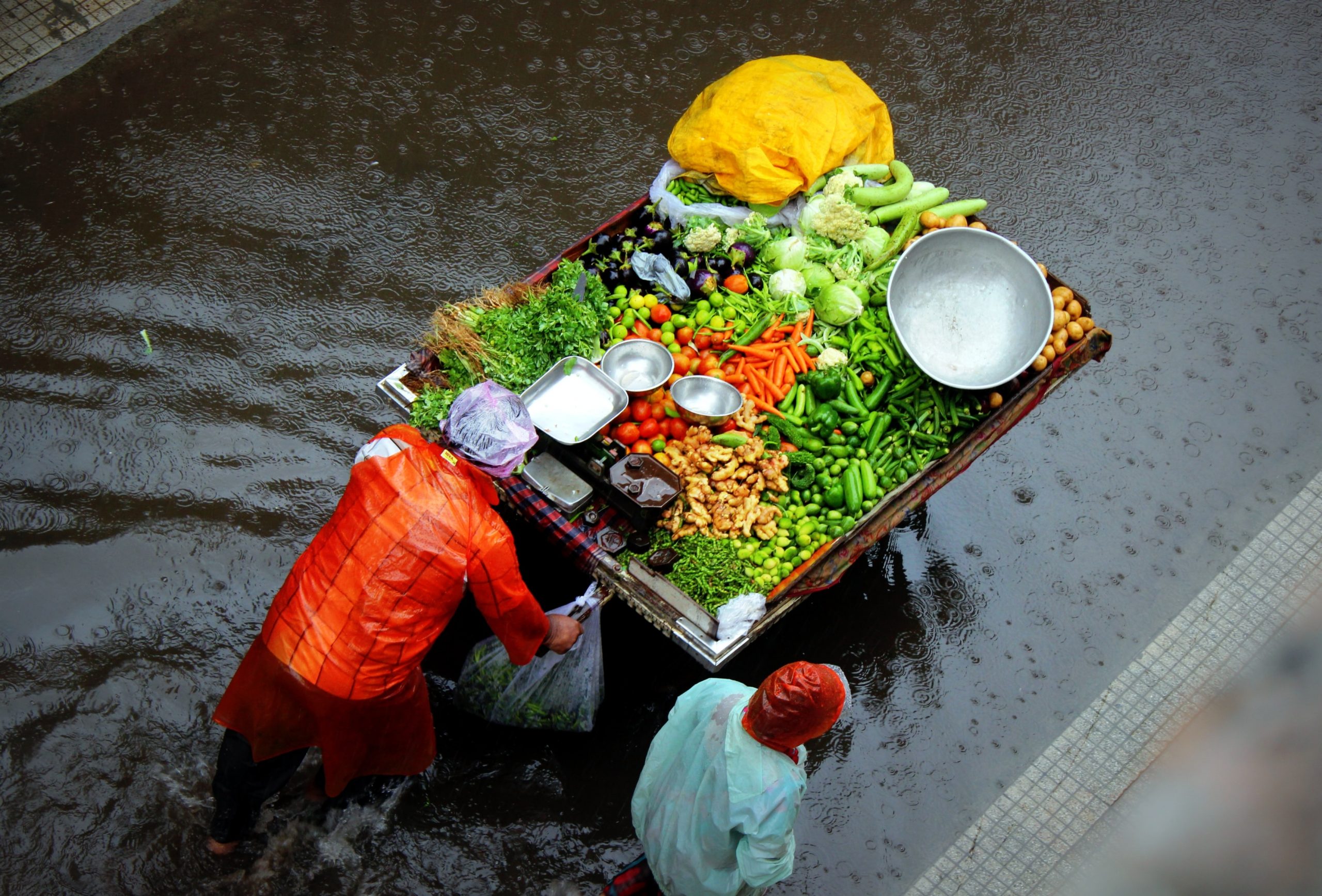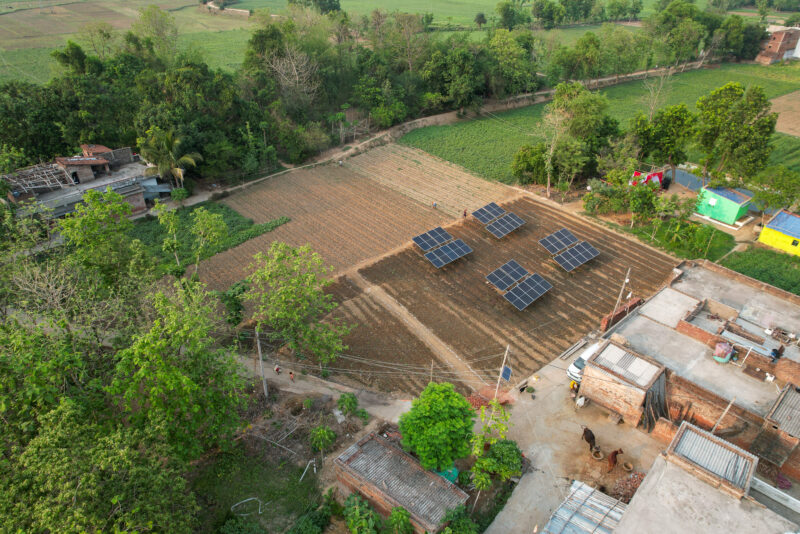Tackling India’s Food Systems Challenges in the Era of Climate Change

In this blog post, TCI postdoctoral associate Anaka Aiyar and former communications and outreach manager Jessica Ames present the “technology-plus” approach for dealing with India’s food systems challenges in the midst of climate change, as proposed in the TCI’s book, Transforming Food Systems for a Rising India.
In India, as in the rest of the world, climate change has very real impacts on people’s lives. The number of hot days is on the rise, as is the number of heat-related deaths. A terrible heatwave in 2015, with extreme temperatures of ~50 ̊C (122 ̊F), was linked to 2,500 deaths across the country. The unpredictability of rainfall, flooding, droughts, and catastrophic weather-related events are all increasing. In the last two years, farmers across the country have lost crops due to unpredictable rainfall and drought. In 2015, India’s third-largest city, Chennai (located in Tamil Nadu in the south), experienced massive floods, followed by a crippling drought in early 2019. In May 2019, Cyclone Fani wiped out 500,000 homes in the eastern state of Odisha, affecting one million people and costing the government 120 billion rupees (12,000 crores) in recovery. Indeed, the effects of climate change are very real—and very much felt across the country—as seen in just a few of the biggest news headlines.
But what about the less obvious effects of climate change? How does a changing climate impact our food systems and what does this mean for nutrition security in the Indian context? Extensive evidence on how climate change has been and will continue to affect people across the country is presented in chapter 10 of TCI’s book, Transforming Food Systems for a Rising India.

While India’s per capita emissions are low, they have been increasing rapidly over time.
First and foremost, the authors submit that decreases in agricultural productivity, both across regions and across crops, will be a reality of the future. In the absence of technological advancements in food production, critical macronutrients, such as protein, and micronutrients, like vitamin A, iron and zinc, are in particular danger of falling in short supply across the food system. Current food waste and loss in the supply chain also reduces both the quantity and quality of nutrients in the food supply, and this issue must be tackled holistically.
In addition, the worsening health environment overall, hallmarked by greater pollution, heat, and disease vectors, threatens to stall progress made toward improving India’s health outcomes. Finally, coastal changes, losses in labor productivity from heat and illness, as well as economic losses from climate events, have already started to exacerbate regional disparities. These trends only increase the vulnerability of already impoverished regions, households, and marginalized groups such as women, children, and minorities.
What are we to do?
Essentially, there are two main avenues to address climate change: the first is to reduce the effects by slowing or eliminating emissions; the second is to adapt. We must adapt because some of the damage is done and we can’t undo the consequences of global warming that are already underway. However, we can limit how far we go. So, what do we do with a 1.5-2.0 ̊C global increase?
In Transforming Food Systems for a Rising India, the authors propose a technology-plus approach towards mitigation and adaptation. Technology-plus refers to an approach that combines technology, community engagement, and conservation, that when integrated will provide the best shot at ensuring food security in the face of climate change.
With regards to mitigation policies, a technology-plus approach prioritizes:
- Orienting research and development towards agricultural technologies that simultaneously increase productivity and reduce emissions.
- Decentralizing property rights to local communities in order to help in the development of the natural habitat. These natural resources play an important role in absorbing atmospheric carbon.
- Incentivizing community-based mitigation and increasing the credibility of climate efforts for citizens and businesses alike by reducing corruption associated with enforcement.
- Speeding up the mitigation process through greater regional and global trade integration and cooperation.
- Investing in environmentally sustainable urban infrastructure development through solid waste management, reducing electricity consumption, groundwater management, and research and development for climate-friendly construction materials, to reduce urban emissions and create cleaner cities.
In terms of adaptation policies, technology-plus strategic priorities include:
- Identifying vulnerable groups and targeting adaption efforts to address their needs.
- Reducing vulnerability of non-staple foods to climate change through appropriate technology investments, which will help maintain availability of macronutrients and micronutrients in the food system.
- Incentivizing water conservation through rainwater harvesting and improving water and sanitation infrastructure in order to reduce water stress.
- Reducing food loss and waste in the value chain. This will increase food availability by at least 30% at current production capacity.
- Reorienting food safety nets toward increasing diet diversity, thereby safeguarding impoverished people’s access to nutrition security.
- Enforcing and monitoring of business practices and incentivizing the adoption of sustainable business practices in the food value chain.
For more details and analysis, we invite you to read chapter 10 of Transforming Food Systems for a Rising India: Managing Climate Change Risks in Food Systems.
Anaka Aiyar is a postdoctoral associate at the Tata-Cornell Institute and co-author of the book Transforming Food Systems for a Rising India. On twitter @AiyarAnaka.
Jessica Ames was the communications and outreach manager at the Tata-Cornell Institute during the book’s creation and launch. She continues to work in global programs at Cornell University. On twitter @j_scott_ames.





